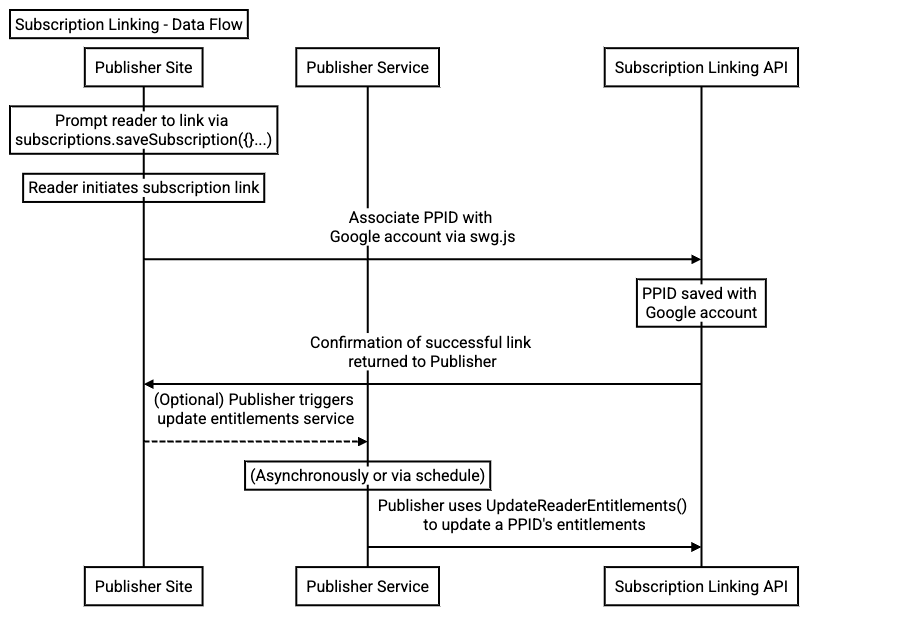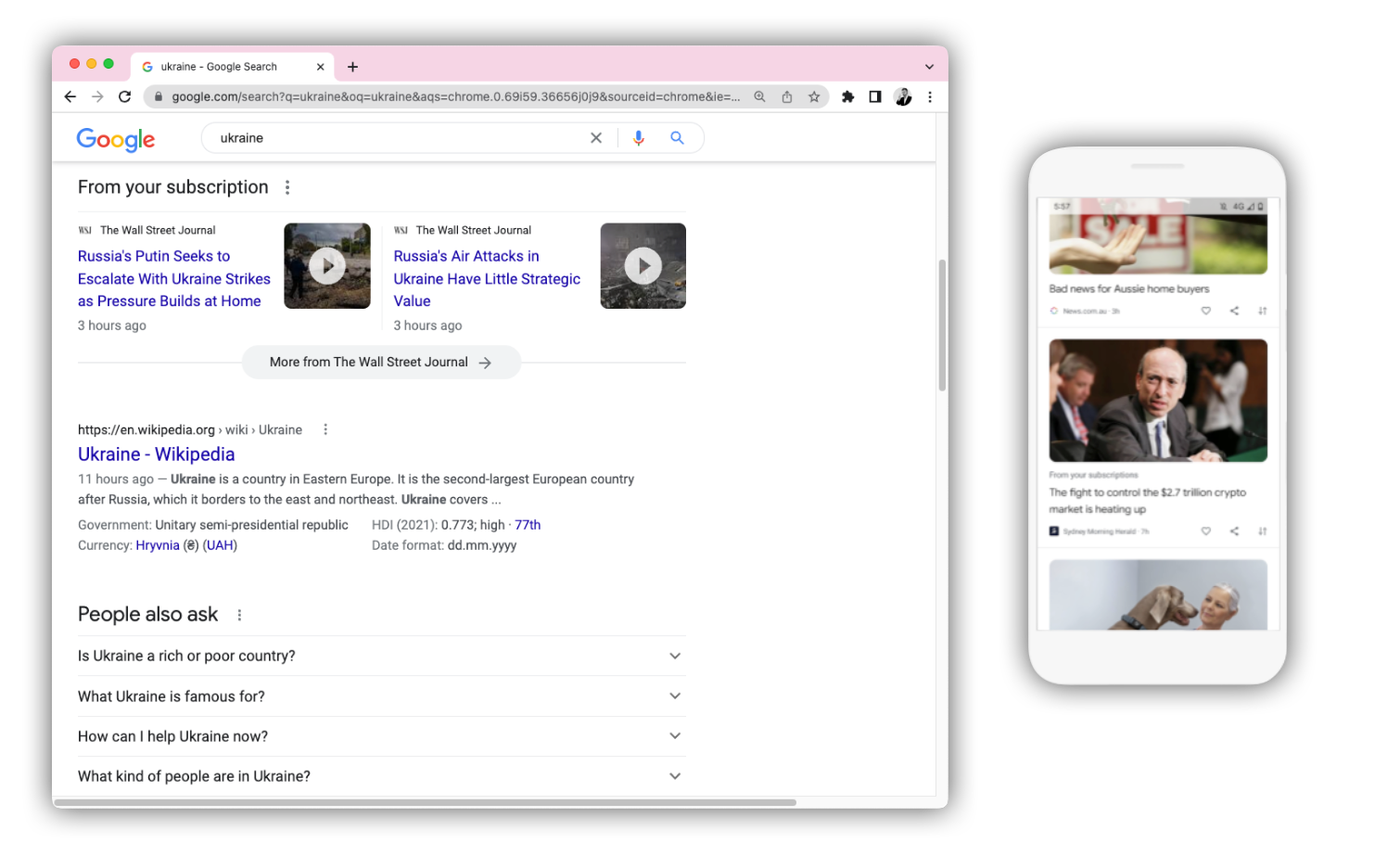
Rysunek 1. Diagram sekwencji ogólnego przepływu danych w procesie łączenia subskrypcji.
Aby wdrożyć funkcję linkowania subskrypcji, wydawca musi użyć kodu JavaScript po stronie klienta, aby zainicjować tworzenie linków dla czytelników, oraz usługi po stronie serwera, aby zarządzać uprawnieniami czytelników. Oba te systemy korzystają z informacji z hostowanej strony internetowej, konfiguracji Publisher Center Twojej publikacji oraz informacji o koncie usługi Google Cloud.
Łączenie subskrypcji
- Czytelnik z opłaconą subskrypcją lub uprawnieniami do wpłacania darowizn odwiedza Twoją witrynę.
- Twój kod po stronie klienta używa
swg.js, aby umożliwić czytelnikowi połączenie konta z kontem Google, dzięki czemu może on korzystać z korzyści wynikających z połączenia, używając przycisku lub wezwania do działania zaprojektowanego i umieszczonego w Twojej witrynie. - Po wywołaniu wezwania do działania (czy to w sposób jawny przez kliknięcie, czy też domyślnie w wyniku innego działania lub stanu) czytelnik loguje się na swoje konto Google (lub wybiera jedno z aktywnych kont) i wydaje wydawcy zgodę na powiązanie informacji o czytelniku z jego kontem Google. W ramach żądania wydawca tworzy identyfikator podawany przez wydawcę (PPID) dla czytelnika. Identyfikator ten jest zapisywany na koncie Google czytelnika i używany do kolejnych interakcji z interfejsem API.
- Po udzieleniu zgody czytelnik wraca do witryny wydawcy. Wydawca może teraz poinformować Google, jakie uprawnienia ma czytelnik.
- (Asynchronicznie) Wydawcy będą wysyłać do Google informacje o każdym czytelniku, który połączył swoje konto, używając identyfikatorów PPID, aby zaktualizować rekord Google o uprawnieniach związanych z tymi identyfikatorami. Informacje Google o uprawnieniach PPID muszą być aktualne, ponieważ są usuwane po tym, jak staną się nieaktualne. Rekord staje się nieaktualny 30 dni po dacie jego wygaśnięcia i jest następnie usuwany.
Zalety
Gdy czytelnik odwiedza witrynę wydawcy, która ma zintegrowane interfejs Subscription Linking, i zapłacił za subskrypcję lub wpłacił darowiznę, może połączyć swoje konto wydawcy z kontem Google. Dzięki temu mogą oni uzyskać większą widoczność treści z tej publikacji w usługach Google, takich jak wyszukiwarka czy Discover. Dzięki temu czytelnicy mogą w pełni korzystać z treści z publikacji, za które zapłacili. Czytelnicy mogą w dowolnym momencie odłączyć swoje konto wydawcy od konta Google lub wykonać działanie określone przez wydawcę.
Podsumowanie korzyści dla czytelników
- Czytelnicy szukają dowolnych treści, wiadomości lub innych treści, i widzą listę „Z Twoich subskrypcji”.
- Czytelnicy mogą wchodzić w interakcję z kartami Discover (na ekranie głównym Androida lub iOS w aplikacji Google, w Chrome lub za pomocą widżetu na ekranie głównym) i oglądać sekcję „Z Twoich subskrypcji” na kartach Discover.

Rysunek 2. Zrzut ekranu z modułem „Z subskrypcji” na stronie wyników wyszukiwania na komputerze i urządzeniu mobilnym
Korzyści dla wydawcy wynikające z połączenia subskrypcji
- wydajniejsze i bardziej odporne na awarie ustawienia po stronie serwera na potrzeby zarządzania kontem,
- Nie wymaga tworzenia publicznego punktu końcowego IDP OAuth ani uprawnień, jak w przypadku poprzednich wersji łączenia kont.
- Zwiększenie zaangażowania i zachowania użytkowników dzięki wyraźniejszemu wyróżnieniu treści publikacji na stronach wyników wyszukiwarki Google.
